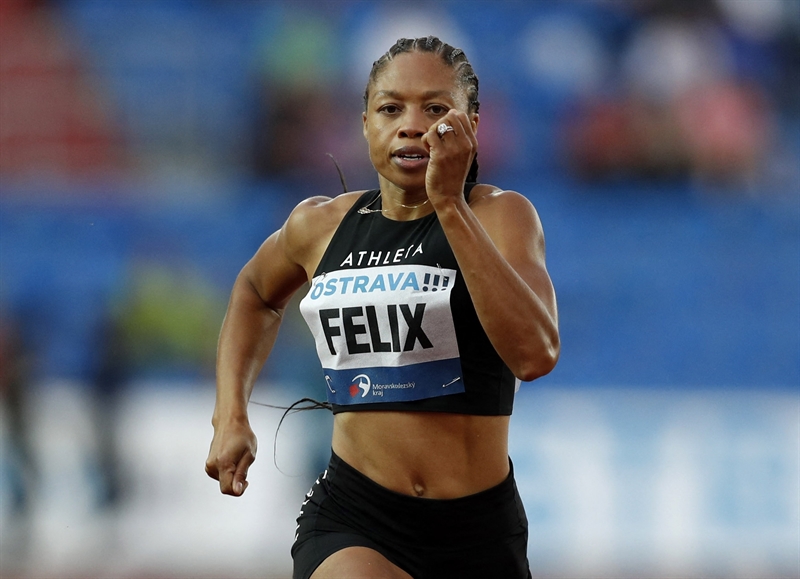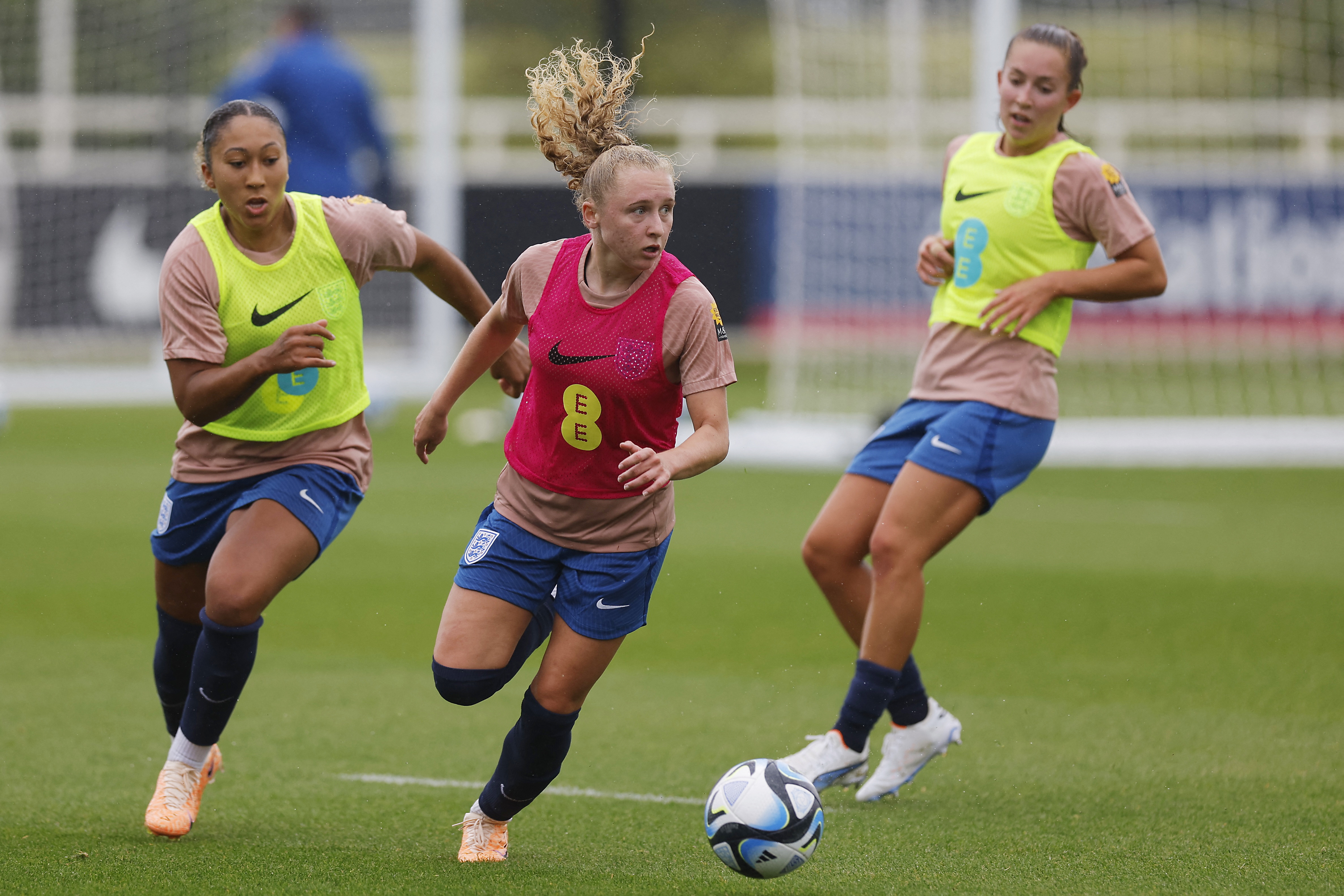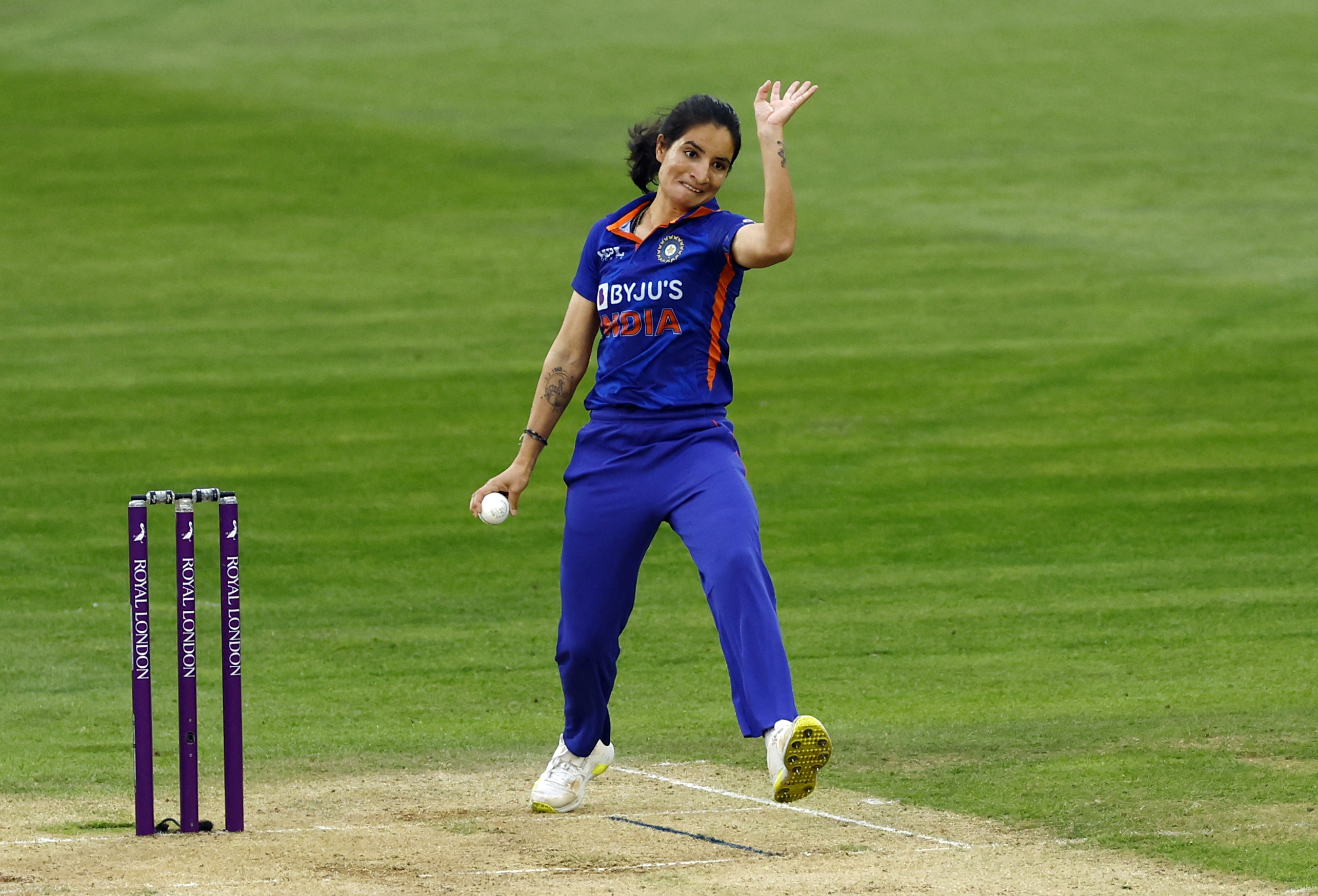You are viewing 1 of your 1 free articles
Supermom: return to participation and performance post-partum
Return to sport following pregnancy can be a difficult transition. Nonhlanhla Mkumbuzi outlines the multidisciplinary approach and biopsychosocial considerations for female athletes returning to participation and performance post-partum

Participation and professionalization of women’s sports are increasing. However, this does not reflect in the research and prevailing guidelines, which practitioners and clinicians use to optimize female athlete performance. This is even more apparent in the absence of information guiding return to exercise during the transition from pregnancy to motherhood. This article outlines a multidisciplinary, phased, whole-systems, and biopsychosocial approach to the considerations for female athletes returning to participation and performance post-partum (1).
Perinatal considerations
Practitioners and clinicians often overlook the perinatal considerations in the assessment of sex-related differences in performance and injury. For example, pelvic floor dysfunction such as urinary incontinence is common in the perinatal period and may affect sporting participation and performance(2). Despite acknowledging the effect of pelvic floor dysfunction on female athletic performance, practitioners typically ignore it when developing return to play (RTP) protocols. Most data on RTP is largely male-derived, and protocols focus on managing musculoskeletal (MSK) impairments, psychological readiness, and risk of re-injury. Considerations such as childbirth-related trauma, menstrual health, breast health, energy balance, psychological well-being, fear of movement, and sleep are essential in perinatal athlete support. Post-partum RTP offers athletes and those who support them an opportunity to plan for the impending physical and psychological changes.
1. Ready (pre-natal to early post-partum)(1,3)
In this phase, clinicians must educate athletes about pregnancy-related physical and physiological changes. Importantly, tissue healing following childbirth may take 4–6 months, not the arbitrary six weeks. Therefore, preparation should aim to maintain exercise throughout pregnancy and limit deconditioning. Additionally, clinicians should include perinatal health considerations in the athlete management plan. For example, clinicians should educate athletes on the increase in body mass and how the pressure to return to their pre-partum physique may predispose them to low energy availability (LEA) and risk relative energy deficiency in sport (RED-S).
Post-partum, the pelvic floor is weak in most women and may need training, especially in those women who did not train these muscles before birth(1,4,5). Pelvic floor muscle exercises (PFME) and basic core work targeting strength and endurance should begin pre-natal and in the first few weeks post-partum (6,7). Regardless of delivery mode, all postnatal women should be assessed by a pelvic health physiotherapist before returning to high-impact sport. Perinatal mental health is important, and clinicians should discuss how the post-partum period may be challenging and offer coping strategies or appropriate referrals. The six-week postnatal check is too long to wait for postnatal women to resume or begin a low-intensity physical activity program, including walking, pelvic floor, and abdominal muscle exercises.
2. Review (six to eight weeks post-partum)(1,3)
Review and evaluation of the post-partum athlete should address acute MSK and pelvic health rehabilitation needs. In addition, clinicians should screen for whole-systems and biopsychosocial considerations such as childbirth-related trauma like abdominal wall dysfunction, pelvic floor dysfunction, or post-traumatic stress. Clinicians should be particularly cautious with high-impact activities. Athletes should not return to high-impact activity before three months postnatal or beyond if they identify any symptoms of pelvic floor dysfunction before or after any high-impact activity.
Breastfeeding and breast health are also crucial in the immediate post-partum period as at least 50% of mothers are breastfeeding at six to eight weeks post-partum. While hormones related to breastfeeding may alter some tissues, the evidence for this is equivocal. However, post-partum runners may compensate for joint laxity by altering how they move. Therefore, clinicians should screen post-partum athletes for hypermobility impairments. The high energy cost of breastfeeding plus the increasing training volume predisposes athletes to develop LEA and RED-S.
Such considerations for navigating RTP in breastfeeding women are important, as it can create a barrier to exercise if women are not appropriately supported. Breast size changes during pregnancy may influence bra size and exercise-induced breast pain. Therefore, educating women about the benefits of timing feeds before running to prevent the breasts from becoming uncomfortably full and wearing suitable breast support is also essential.
Women may also develop postnatal depression(8). Thus, reviewing the psychological well-being of female athletes at this phase is essential. In particular, birth trauma is a specific maternal psychological well-being issue. Birth trauma is severe psychological distress because of actual or perceived trauma or threat during childbirth. The risk of birth trauma increases in low socioeconomic conditions, instrumental deliveries, emergency cesarean sections, and inadequate pain relief, among other medical conditions. Additionally, mothers may perceive seemingly normal childbirth as traumatic due to perceived harm or loss of control.
Further, poor maternal sleep hygiene increases post-partum anxiety and depression risk. Specifically, sleep loss and disruption to the circadian rhythm are related to increased injury risk, lower general health, and impaired psychological health. Consequently, physical and psychological changes associated with sleep loss may delay post-partum tissue healing, influencing physical conditioning and injury risk. It is unrealistic to aim to increase sleep duration during early post-partum. However, as the baby’s sleep duration increases, post-partum women must prioritize their sleep routine to pre-empt the negative effects of sleep loss. Hence, implementing evidence-informed coping strategies such as mindfulness, relaxation, or cognitive behavioral therapy approaches in rehabilitation may be beneficial for long-term management and promotion of maternal psychological well-being.
3. Restore (8-16 weeks post-partum)(1,3,9)
Women are recovering from several pregnancy-related changes such as increased body mass, hormonally induced changes such as joint and connective tissue laxity, postural changes, transient osteoporosis, and childbirth-related trauma such as tearing of the pelvic floor muscles or recovering from cesarean surgery. Therefore, pelvic floor rehabilitation and other relevant whole-systems considerations are essential to restore post-partum athletes to their pre-natal level of performance. A potential concern at this stage may be fear of movement (FOM). The FOM may be a protective action to avoid activities that could impair recovery. Musculoskeletal dysfunction, especially lumbopelvic pain, is prevalent in post-partum runners. Although it typically subsides between one and three months, it may contribute to FOM in the early RTP stages(10,11). However, it could be maladaptive if this fear persists beyond the healing time, as it does in 7% of post-partum runners. An increased FOM may present as range of motion, alignment, and flexibility impairments. Clinicians can identify these as potential causes of post-partum MSK pain as they may cause gait alterations such as restricted trunk and pelvis motion, increased ground contact time, and step width(12). Therefore, any FOM must be addressed early during post-partum rehabilitation. Management may include relevant strength and conditioning, graded exposure, and support wear such as compression garments or appropriate footwear.
4. Recondition (>16 weeks)(1.3)
Pregnancy and childbirth will result in some physical deconditioning, even in those women who remain physically active throughout their pregnancies(4). Therefore, it is vital to recondition the perinatal athlete for their required physical and psychological sporting demands. Reconditioning should focus on cardiovascular fitness, muscle mass, strength, and endurance. Various factors such as baseline physical conditioning, biomechanical changes, and birth experience influence their physical condition after childbirth. Graded exposure towards individual-specific training load requirements should gradually build up post-partum exercise, progressing intensity and load as tolerated. As post-partum women may do too much too soon, they risk overtraining if they engage in excessive exercise relative to their available energy reserve, which may put them at risk of developing RED-S.
5. Return to sport (1,3,13)
Return to sport should be individualized, evidence-informed, and guided. Athletes should regularly evaluate their progress when returning to sport. If the post-partum athlete is more than three months postnatal and shows no remarkable MSK impairments or psychological and social red flags, it may be appropriate to plan graded RTP. In cases where athletes present with injury risk factors, clinicians should be cautious when planning a return to sport with a lower starting point and more graded progressions.
6. Refine performance (1,3,9)
In the later stages of the post-partum RTP, the athlete’s support team should refine the whole-systems and biopsychosocial strategies. Childbirth-related trauma, menstrual health, breast health, energy balance, psychological well-being, fear of movement, and sleep are critical when deciding on athlete readiness. The overarching aim in this phase should be to optimize training strategies and enhance athlete training and competition availability, retraining the athlete in their sport and optimizing performance.
Table 1: Post-natal running exercise progressions(14)
| Weeks post-natal | Exercise progression guidelines |
|---|---|
| Week 0-2 | · Pelvic floor muscle strength and endurance |
| · Basic core exercises | |
| · Walking (cardiovascular endurance) | |
| Week 2-4 | · Progress walking and pelvic floor rehab |
| · Introduce squats, lunges, and gluteal bridges as tolerated | |
| Week 4-6 | · Low impact cardiovascular exercise (stationary bicycle) |
| · Low impact cross training | |
| · Individualize rehabilitation program according to birth trauma and delivery mode | |
| Week 6-8 | · Scar mobilization |
| · Power walking | |
| · Increase low-impact exercise intensity | |
| · Add resistance to lower limb and core training | |
| Week 8-12 | · Introduce swimming (dependent on wound healing) |
| · Progress lower limb and core rehab as tolerated | |
| Week 12 & beyond | · Graded and guided return to running program (start with run/walk program) |
| · Individualize program according to biopsychosocial risk factorso Specific goalso Obesityo Tissue healing and capacityo Psychological readinesso Risk vs. reward |
Conclusion
The RTP evaluation and management of post-partum women requires a multidisciplinary, individualized approach with graded exercise progression. Acknowledging and accommodating the possible interactions between considerations within a biopsychosocial model facilitates holistic management. An evidence-based approach to post-partum return to sport will optimize athletic performance and enable the sporting success of the female athlete beyond motherhood. Adopting a multidisciplinary approach to post-partum RTP may also open new research avenues to improve the knowledge on post-partum recovery and facilitate the development of guidelines to inform clinicians and women about a safe return to sport.
References
- Br J Sports Med. 2022; 56(5)
- Br J Sports Med. 2021.55;1286–1292.
- 2019. DOI: 10.13140/RG.2.2.35256.90880/2
- Br J Sports Med. 2016. 50;571–589.
- International Urogynecology Journal. 2018. 29;1757–1763
- Brazilian Journal of Physical Therapy. 2021.25; 664-675
- Am J Obstet Gynecol. 2020; 222(247):1-8.
- Journal of Affective Disorders. 2019; 246: 29–41
- Academy of Pelvic Health Physical Therapy. 2022; 46 (1)
- Journal of Women’s Health Physical Therapy. 2022; 46 (1)
- Br J Sports Med. 2019; 53:90–98
- Archives of Physiotherapy. 2020; 10:19
- Physiotherapy Theory and Practice. 2009; 25(4):310–325
- Goom, Donnelly & Brockwell, Emma. (2019). Returning to running postnatal – guidelines for medical, health and fitness professionals managing this population.
Newsletter Sign Up
Subscriber Testimonials
Dr. Alexandra Fandetti-Robin, Back & Body Chiropractic
Elspeth Cowell MSCh DpodM SRCh HCPC reg
William Hunter, Nuffield Health
Newsletter Sign Up
Coaches Testimonials
Dr. Alexandra Fandetti-Robin, Back & Body Chiropractic
Elspeth Cowell MSCh DpodM SRCh HCPC reg
William Hunter, Nuffield Health
Be at the leading edge of sports injury management
Our international team of qualified experts (see above) spend hours poring over scores of technical journals and medical papers that even the most interested professionals don't have time to read.
For 17 years, we've helped hard-working physiotherapists and sports professionals like you, overwhelmed by the vast amount of new research, bring science to their treatment. Sports Injury Bulletin is the ideal resource for practitioners too busy to cull through all the monthly journals to find meaningful and applicable studies.
*includes 3 coaching manuals
Get Inspired
All the latest techniques and approaches
Sports Injury Bulletin brings together a worldwide panel of experts – including physiotherapists, doctors, researchers and sports scientists. Together we deliver everything you need to help your clients avoid – or recover as quickly as possible from – injuries.
We strip away the scientific jargon and deliver you easy-to-follow training exercises, nutrition tips, psychological strategies and recovery programmes and exercises in plain English.









